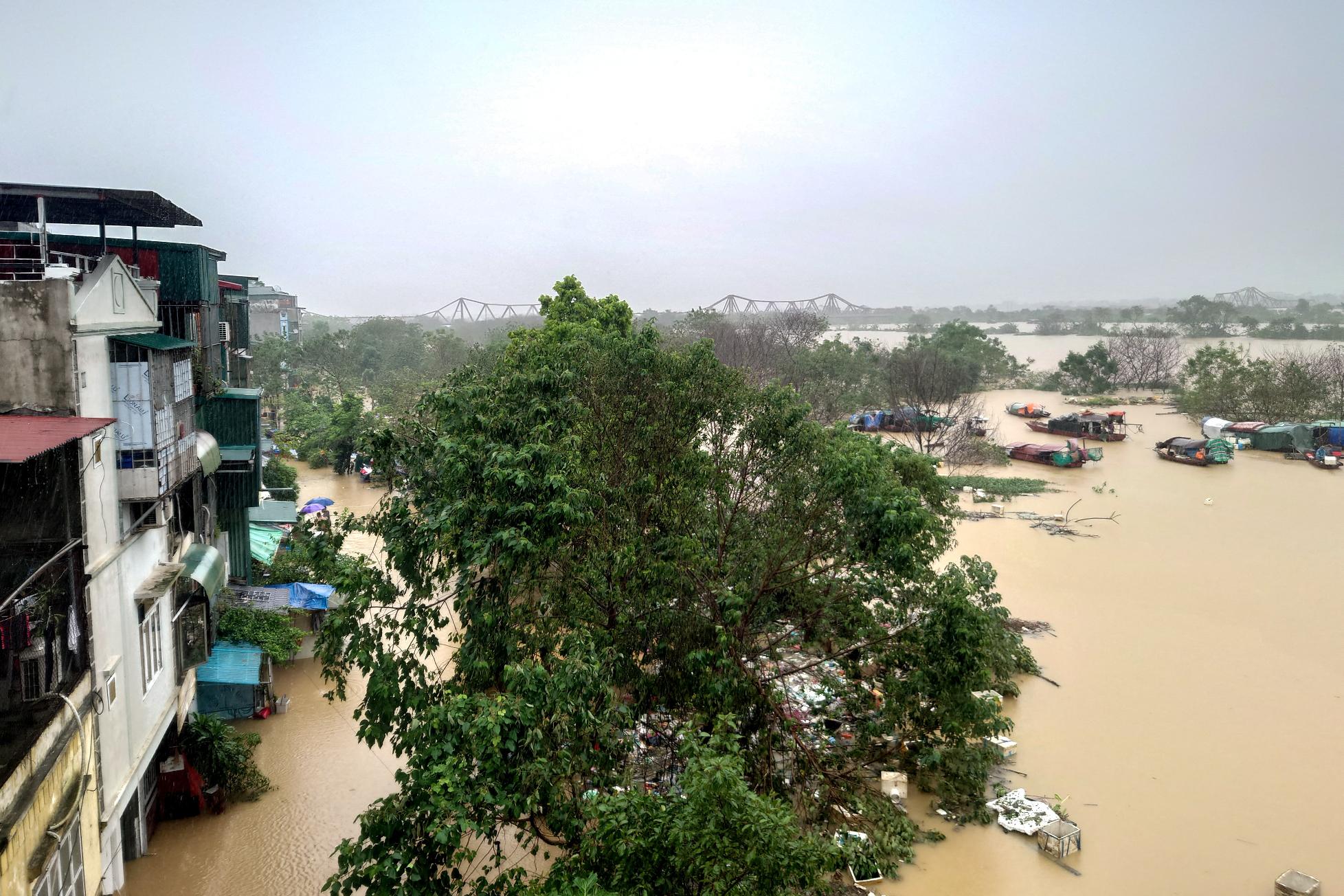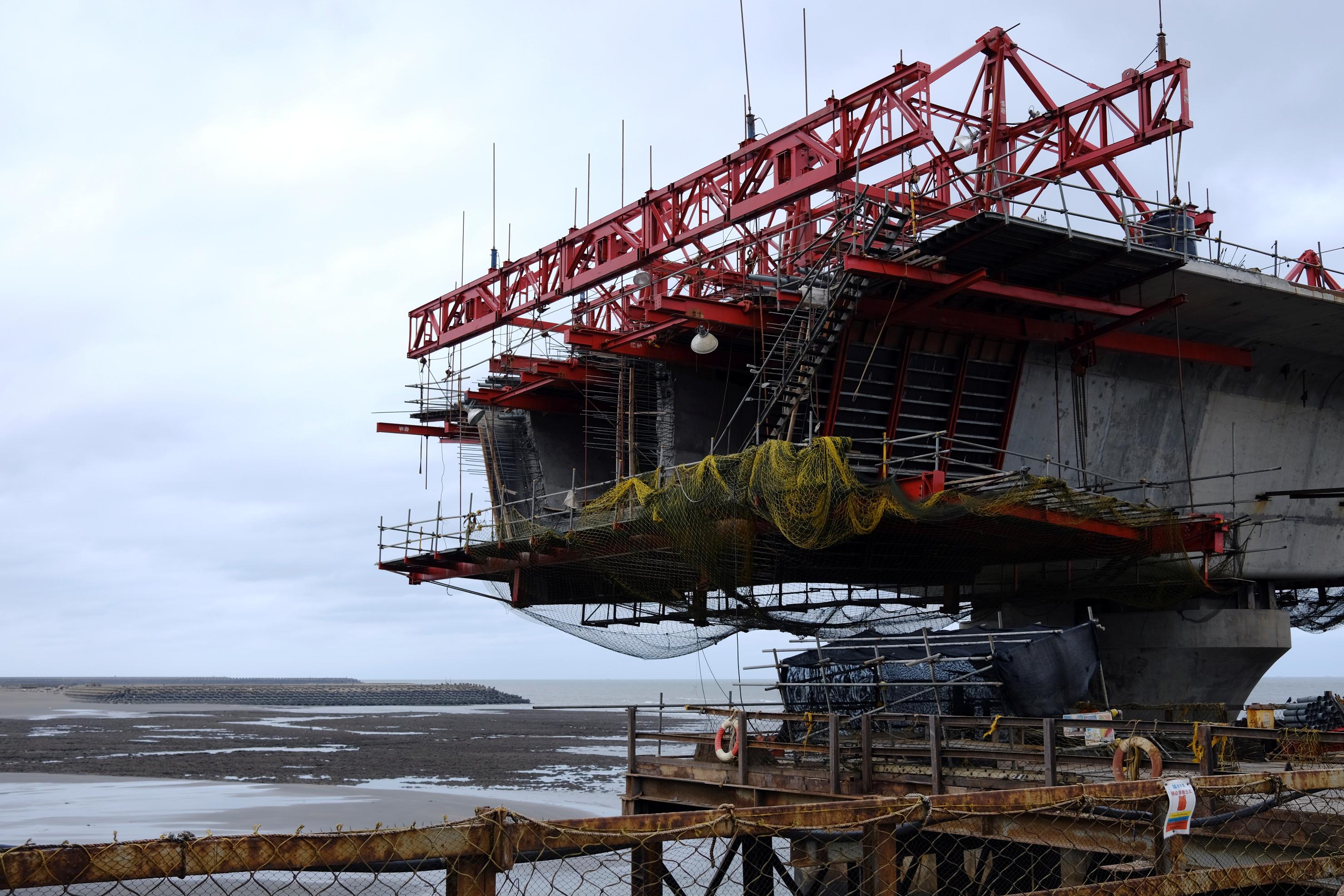
2024-09-11 06:30
Asset sale deal to Carlyle on track Full-year production outlook narrowed First-half profit up 27%, production rises 38% Sept 11 (Reuters) - Gas producer Energean (ENOG.L) , opens new tab reported higher first-half profits on Wednesday, helped by a rise in production due to strong summer demand in Israel, which contributes more than 70% of total output. The company, whose main production comes from its gas operations offshore Israel, is looking to expand in Europe, Middle East and Africa, particularly where there is long-term policy support for gas and displacement of coal. The company had agreed in June to sell its assets in Egypt, Italy and Croatia to private equity fund Carlyle (CG.O) , opens new tab for up to $945 million. Energean expects to pay a special dividend of up to $200 million following the completion of this deal, which is expected by the end of the year. The company said production for the first-half rose 38% to 146 thousand barrels of oil equivalent (kboepd), from last year, with the Karish and Karish North fields in Israel. Its realised average gas price fell 12% to $4.6 per thousand cubic feet (mcf) for the period. Energean said its day-to-day production in Israel continues to be unaffected by the ongoing geopolitical developments. The group narrowed its production forecast for the year to 155 - 165 kboepd from an earlier outlook of 155-175 kboepd, to reflect year-to-date performance in Israel and the actual start-date and expected ramp-up to full production of Cassiopea offshore Italy. In Italy, Cassiopea started-up in August 2024. The remaining three wells and associated facilities are expected to be brought online, tested and commissioned over the coming months, the company said. "On first pass these appear to be a reassuring set of results, in the face of a challenging macro and political backdrop," said Peel Hunt analyst Werner Riding. Energean's shares slipped 0.2% to 884p by 0737 GMT. Energean aims to double its production in the coming years, primarily through development of new prospects in Israel, including the Katlan field. The company in July also said it would invest about $1.2 billion to develop the Katlan project off Israel, as it announced its final investment decision, with gas output expected to commence in the first half of 2027. Energean reported a profit after tax of $89 million, or 48 cents per share, for the six-months ended June 30, from $70 million, or 39 cents per share last year. Sign up here. https://www.reuters.com/business/energy/energean-posts-higher-first-half-profit-production-boost-2024-09-11/

2024-09-11 06:29
Hanoi evacuates thousands from areas near swollen river Vietnam death toll at 179 since Yagi swept in on Saturday Vietnam utility halts water discharges from big hydropower plant Hanoi flagged concerns about China hydropower plants Export-oriented northern areas suffer HANOI, Sept 11 (Reuters) - Vietnam's capital of Hanoi evacuated thousands of people living near the swollen Red River as its waters rose to a 20-year high, flooding streets days after Typhoon Yagi battered the country's north, killing at least 179 people. Asia's most powerful typhoon this year, Yagi brought gales and heavy rain as it moved westwards after landfall on Saturday, causing the collapse of a bridge this week while it scythed through provinces along the Red River, the area's biggest. "My home is now part of the river," said Nguyen Van Hung, 56, who lives in a neighbourhood on the banks of the Red River. Across the country, the typhoon and subsequent landslides and floods have killed 179 people while 145 were missing, the government estimated. Vietnam's state-run power utility EVN said on Wednesday it had cut off power from some flooded parts of the capital due to safety concerns. Mai Van Khiem, director of the National Center for Hydro-Meteorological Forecasting, said in a statement that the Red River was at its highest in two decades and that more rain was expected over the next two days. Some schools in Hanoi have told students to stay home for the rest of the week, while thousands of residents of low-lying areas have been evacuated, the government and state media said. Nearer the city centre, charity Blue Dragon Children's Foundation evacuated its office on Tuesday, after authorities warned of flood risks. "People were moving frantically, moving their motorbikes, relocating items," said spokesperson Carlota Torres Lliro, expressing concern for dozens of children and families living in makeshift houses by the river. EVN said on Wednesday it had stopped discharging water from Hoa Binh hydropower dam, the second largest in northern Vietnam, into Red River tributary, the Da River, to reduce water flows. Vietnamese authorities also raised concerns on Wednesday about Chinese hydropower plants releasing water into another Red River tributary, the Lo River, known in China as Panlongjiang, with Beijing saying the two countries were cooperating on flood prevention. BLOW TO FACTORIES Yagi wreaked havoc on many factories and flooded warehouses in coastal export-oriented industrial hubs east of Hanoi, forcing closures, with some only expected to resume full operations after weeks, executives said. The disruptions threaten global supply chains as Vietnam hosts large operations of multinationals that ship mostly to the United States, Europe and other developed nations. Elsewhere, in provinces north of the capital, landslides triggered by heavy floods killed dozens. "My house's first floor is completely under the water," said Nguyen Duc Tam, a 40-year-old resident of Thai Nguyen, a city about 60 km (37 miles) from Hanoi. "Now we have no fresh water and electricity," he said. Another resident, Hoang Hai Luan, 30, said he had not experienced such flooding in more than 20 years in the area. "My belongings and possibly those of many others are completely lost." Among the factories located on the outskirts of the city of about 400,000, is a large facility for Samsung Electronics (005930.KS) , opens new tab, which ships about half of its smartphones worldwide from Vietnam. There were no signs of flooding at the facility on Wednesday, a Reuters witness said. Sign up here. https://www.reuters.com/world/asia-pacific/flood-waters-vietnam-threatening-inundate-hanoi-districts-2024-09-11/

2024-09-11 06:28
BANGKOK, Sept 11 (Reuters) - At least two people were killed and hundreds stranded in Thailand after heavy rains swept through two northern provinces, swelling rivers, inundating settlements and triggering mudslides, authorities said on Wednesday. The adverse weather, which comes in the wake of Typhoon Yagi - the most powerful storm in Asia this year, has impacted about 9,000 households in Thailand, Prime Minister Paetongtarn Shinawatra said. "Water currents are still strong," she told reporters. "All agencies are prepared and when the current eases, they will go in immediately." The impacts of the storm have killed at least 143 people in Vietnam, where it made landfall on Saturday before moving westwards, with floods forcing the evacuation of thousands of residents living near the swelling Red River in the capital Hanoi. Thailand's Chiang Mai province experienced flash floods and mudslides, with two deaths recorded, according to its governor. In the Mai Sai district of neighbouring Chiang Rai province, which borders Myanmar, rubber boats were unable to reach some flooded areas where hundreds were stuck and awaiting help, said district chief Narongpol Kid-an. "Helicopters will be used to evacuate stranded residents and deliver food and water," he told Reuters. A resident in the main town in Mae Sai, which has a population of over 28,000, said their group of three people was trapped on the second floor of a building after rising water submerged the lower level. "We have not eaten anything since yesterday morning," the resident said, asking not to be named. "It is still raining heavily in Mae Sai. We hope a rescue team or somebody will come to help us." Sign up here. https://www.reuters.com/business/environment/least-two-dead-hundreds-stranded-thailand-floods-hit-north-2024-09-11/

2024-09-11 06:10
LITTLETON, Colorado, Sept 11 (Reuters) - California and Texas lead the national charge on grid-scale power sector battery systems, accounting for 72% of the battery networks currently in operation and around 65% of the battery development pipeline. California has the largest footprint of currently deployed utility batteries, with roughly 9,920 megawatts (MW), according to the United States Energy Information Administration (EIA). Texas has the next largest power battery system, with 4,832 MW. In total, 29 states currently deploy 20,521 MW of battery systems within their power networks, and an additional 28,600 MW is in development and expected online by mid-2026, according to energy data platform Cleanview. FULLY CHARGED Grid-connected utility batteries allow for state energy suppliers to store surplus power during times of high output, such as when solar output peaks and pushes total generation levels above system demand needs. Power firms can then discharge the batteries during peak consumption periods, which ensures that utilities can make full use of renewable power output and meet system demand peaks with power that was partially generated at other times of the day. Utilities with extensive battery systems can also use them to displace power from fossil fuels, thereby helping to reduce power pollution even as they lift overall power supplies. The California Independent System Operator - the state's main electricity provider - currently supplies around 17% of its electricity from batteries during the evening peak demand period, according to energy data platform gridstatus.io. That share of electricity supply exceeds the share of California's wind farms and hydro dams over the same period, and has allowed utilities to reduce power imports. CONCENTRATED POWER Once the planned battery systems are completed in 2026, the national battery network will more than double from its current scale to around 49,110 MW. Texas will overtake California as the top battery state once its pipeline of 12,425 MW is brought online, bringing the state's total to 17,257 MW. California's 6,071 MW of planned capacity will lift its total battery network to 16,000 MW, ensuring those two states retain a roughly 70% share of the total battery network after the development pipeline is finished. GROWTH MARKETS Arizona, Nevada and Florida are the next largest states in terms of currently deployed power battery systems, boasting around 1,813 MW, 1,125 MW and 561 MW of capacity, respectively. Arizona also has one of the largest battery pipelines, of 2,616 MW, which will lift the state's total capacity to 4,430 MW when complete and ensure the state remains the third-largest power battery user. South Carolina and New York have the next largest battery development pipelines, of 1,881 MW and 1,178 MW, respectively. Idaho, New Mexico, Utah and Nevada all have planned capacity additions of over 400 MW, EIA data shows. An additional nine states have 100 MW or more in development, and five states have between 50 MW and 99 MW planned. Altogether, 31 states have some battery capacity planned for their power networks within the next two years. NO SHOWS Currently, 19 states have no planned battery systems in development, including Pennsylvania, Nebraska, Kansas, Iowa and Kentucky. Some of those power systems are overwhelmingly powered by fossil fuels, such as Kentucky's, and so generate little to none renewable power that requires storage. Others, such as Iowa, source over half their total electricity from renewable sources, and have a growing network of gas "peaker" plants that supply power whenever there's a supply-demand mismatch. Overall, however, battery systems look set to become increasingly popular across a majority of states, especially as costs continue to trend lower while overall electricity and power demand increases. The cost of a 20-foot direct current (DC) battery container that can store around 3.7 megawatt hours (MWh) of power for 4 hours has nearly halved between 2022 and 2024, according to consultancy Clean Energy Associates (CEA). Grid-scale battery systems are priced by the kilowatt hour (kWh), or the amount of power or electricity that can be discharged over an hour. In 2024, the average price for U.S. utilities is around $148/KWh for a 20-foot container system. That compares to around $270/kWh for the same unit in 2022, according to CEA. If prices continue to rapidly decline in the coming years, that will make them affordable at scale for a growing number of utilities, and likely make them commonplace within large power systems within the next decade. The opinions expressed here are those of the author, a columnist for Reuters. Sign up here. https://www.reuters.com/business/energy/texas-california-top-us-power-sectors-battery-pipeline-maguire-2024-09-11/

2024-09-11 06:07
LONDON, Sept 11 (Reuters) - If steep interest rate hikes failed to slow the U.S. economy much in recent years, it is reasonable to ask whether their reversal will prove as toothless in a downturn. One of the puzzles of the past two years has been how five percentage points of tightening by the Federal Reserve between March 2022 and July 2023 had so little effect on the overall economy. Despite the borrowing squeeze, U.S. real GDP has clocked annualized growth rates in excess of 2% in seven of the eight quarters since the middle of 2022 - and is on course to add to that tally in the three months through the end of September. And for all its seasonal wobbles, the stock market is close to record highs. This suggests that the economy has become increasingly desensitized to changes in short-term borrowing costs. If that is the case, then policymakers should be anxious that any slowdown from here - or even a cyclical recession - might also be inured to monetary policy easing. Several theories about this resilience to high rates abound: the peculiarity of the COVID-19 pandemic years, including the ample household savings and government spending present before the tightening; the high level of fixed-rate debt in the U.S., most notably mortgages; and elevated aggregate corporate cash levels that more than offset the hit that small firms took from the increase in debt servicing costs. The last of the three is perhaps the most remarkable. Net interest payments made by U.S. firms as a share of GDP were halved during the tightening cycle, according to a recent International Monetary Fund report. Other research shows U.S firms' net interest payments as a share of cash flow have also fallen since 2022 to their lowest level in almost 70 years. SENSITIVITY LOW So what of the implications? Interest rates are clearly set to come back down, with the Fed widely expected to start its easing next week. But given the limited economic impact of rates on the way up, some analysts have argued the U.S. central bank might need to push rates extremely low to stimulate the economy if a recession does indeed unfold. Others may argue that the impact of higher rates has just been delayed and that the lagged effect over the past two years is evident in the erosion of cash levels on some household and corporate balance sheets. But corporate borrowers are having little trouble rolling over their debt, even if they have to refinance at higher rates. Last week saw 59 new debt sales totaling more than $81 billion, the fifth-biggest weekly volume ever for investment grade companies, according to IFR. Some investors think this complex picture should inject much more caution into the Fed's thinking than markets are currently pricing in. Yves Bonzon, the chief investment officer at Julius Baer, reckons uncertainty regarding the transmission of monetary policy to the private sector is "very high," largely because, as he argues, interest rates rose primarily to rein in "an income-driven rather than a debt-driven economic expansion". "If the real economy's sensitivity to interest rates is unusually low, it is not clear how asset prices will react should the Fed meet market expectations and cut aggressively." Bonzon's main point is that Fed easing in the absence of recession may well stimulate already accelerating private-sector credit growth, spur the housing market and related sectors and even revive the rate-stricken leveraged buyout and private equity market. "In that context, the Fed would be mindful to avoid an asset price boom-and-bust cycle," he said, adding that three quarter-percentage-point rate cuts to start would be more than enough while the U.S. central bank continues to assess things. For BlackRock credit strategists Amanda Lynam and Dominique Bly, it all hinges on what you think the Fed is actually doing here. Is it easing to offset signs of looming recession or just recalibrating now that inflation rates have moderated? If it's the former, then that could result in deep policy rate cuts, but could also see a near doubling of high-yield credit spreads amid fears of a downturn. On the other hand, the BlackRock strategists figure that if the Fed is just "normalizing" here, its terminal rate will likely end up much higher, around 3.5%, and credit spreads stay where they are. Whatever your take, it's clear that no one - including the Fed - can be completely sure how this story will unfold over the coming year. That means investors should expect more edgy months like the one we are in right now. The opinions expressed here are those of the author, a columnist for Reuters Sign up here. https://www.reuters.com/markets/blunt-interest-rates-pose-questions-about-fed-easing-mike-dolan-2024-09-11/

2024-09-11 05:58
SINGAPORE, Sept 11 (Reuters) - Major buyers of liquefied natural gas (LNG) flagged risks of purchasing cargoes from the United States following the decision by President Joe Biden's administration to pause export permits of the superchilled fuel to non-Free Trade Agreement countries. Officials from Taiwan's CPC Corp and Germany-based SEFE, which trades LNG cargoes and sells in Asia, stressed the importance of reliability of supply while responding to a question on the impact of the U.S. export pause on Asian markets. "I do trust the traditional LNG suppliers more than U.S. LNG players," said Jane Liao, vice president at CPC, told the APPEC conference. "Most of the Asian buyers, we rely on traditional LNG suppliers, which cherish the long-term relationship more. When you are in difficulties in the implementation of your contract, people will sit down and talk," she said. Fabian Kor, executive vice president Asia at SEFE, said energy security was the topmost priority this year, adding that SEFE may even "slightly overcontract" to ensure availability. "We will not concentrate on supply, just because it is the cheapest in the U.S. We like a bit of geographical supply diversification," he said. "In terms of the U.S., we are quite ambivalent now, meaning we prefer something that is more firm." On supplies of Russian LNG, Liao also said Chinese and Indian purchases of Russian LNG cargoes would ensure the market remains in balance. "Let's say the Chinese companies or the Indian companies, they continue to purchase from Russia, so they won't compete with us in the rest of the market," she said. Sign up here. https://www.reuters.com/business/energy/appec-taiwans-cpc-says-traditional-lng-suppliers-more-dependable-than-us-players-2024-09-11/
